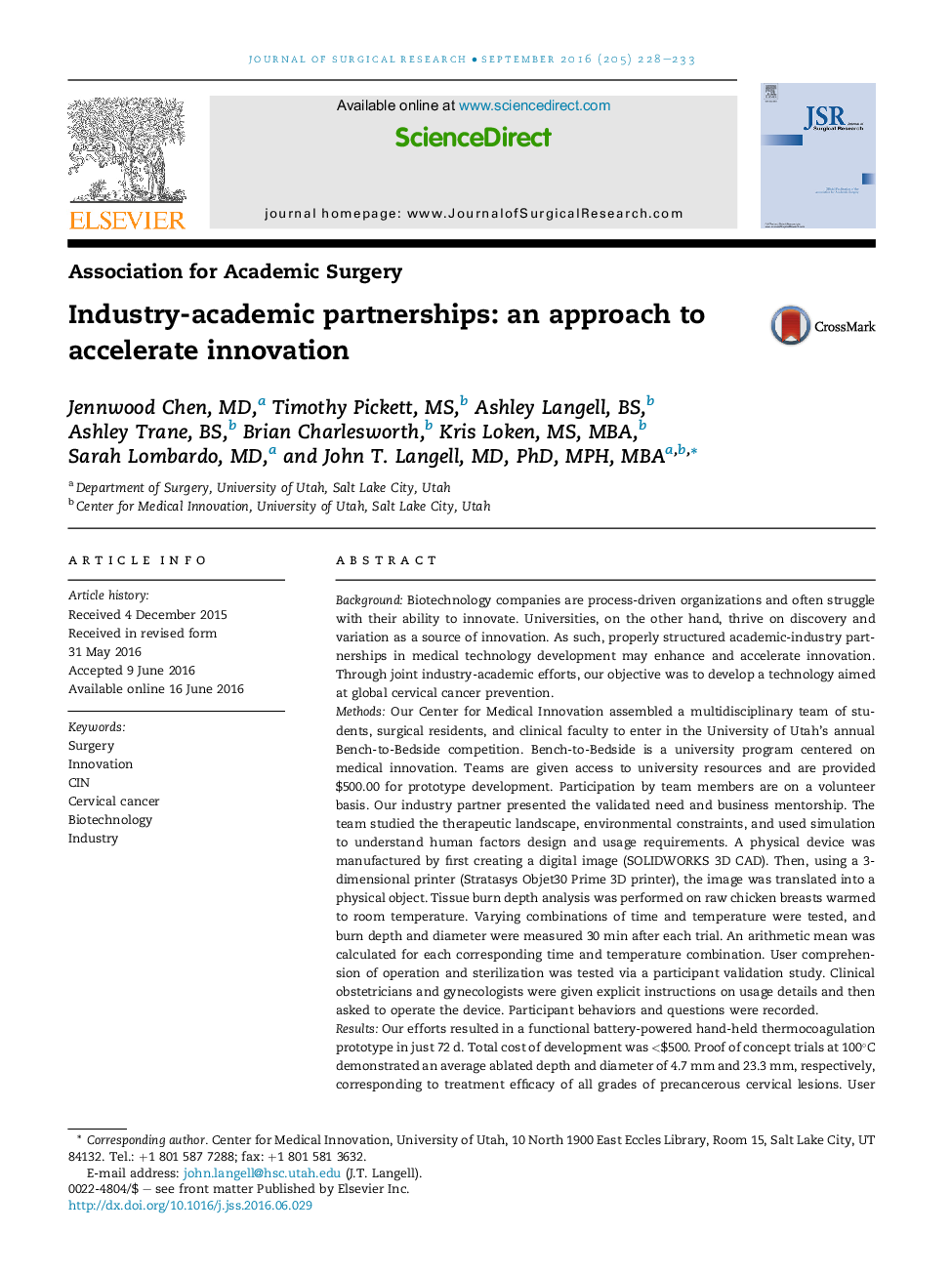| کد مقاله | کد نشریه | سال انتشار | مقاله انگلیسی | نسخه تمام متن |
|---|---|---|---|---|
| 4299322 | 1288388 | 2016 | 6 صفحه PDF | دانلود رایگان |
BackgroundBiotechnology companies are process-driven organizations and often struggle with their ability to innovate. Universities, on the other hand, thrive on discovery and variation as a source of innovation. As such, properly structured academic-industry partnerships in medical technology development may enhance and accelerate innovation. Through joint industry-academic efforts, our objective was to develop a technology aimed at global cervical cancer prevention.MethodsOur Center for Medical Innovation assembled a multidisciplinary team of students, surgical residents, and clinical faculty to enter in the University of Utah's annual Bench-to-Bedside competition. Bench-to-Bedside is a university program centered on medical innovation. Teams are given access to university resources and are provided $500.00 for prototype development. Participation by team members are on a volunteer basis. Our industry partner presented the validated need and business mentorship. The team studied the therapeutic landscape, environmental constraints, and used simulation to understand human factors design and usage requirements. A physical device was manufactured by first creating a digital image (SOLIDWORKS 3D CAD). Then, using a 3-dimensional printer (Stratasys Objet30 Prime 3D printer), the image was translated into a physical object. Tissue burn depth analysis was performed on raw chicken breasts warmed to room temperature. Varying combinations of time and temperature were tested, and burn depth and diameter were measured 30 min after each trial. An arithmetic mean was calculated for each corresponding time and temperature combination. User comprehension of operation and sterilization was tested via a participant validation study. Clinical obstetricians and gynecologists were given explicit instructions on usage details and then asked to operate the device. Participant behaviors and questions were recorded.ResultsOur efforts resulted in a functional battery-powered hand-held thermocoagulation prototype in just 72 d. Total cost of development was <$500. Proof of concept trials at 100°C demonstrated an average ablated depth and diameter of 4.7 mm and 23.3 mm, respectively, corresponding to treatment efficacy of all grades of precancerous cervical lesions. User comprehension studies showed variable understanding with respect to operation and sterilization instructions.ConclusionsOur experience with using industry-academic partnerships as a means to create medical technologies resulted in the rapid production of a low-cost device that could potentially serve as an integral piece of the “screen-and-treat” approach to premalignant cervical lesions as outlined by World Health Organization. This case study highlights the impact of accelerating medical advances through industry-academic partnership that leverages their combined resources.
Journal: Journal of Surgical Research - Volume 205, Issue 1, September 2016, Pages 228–233
